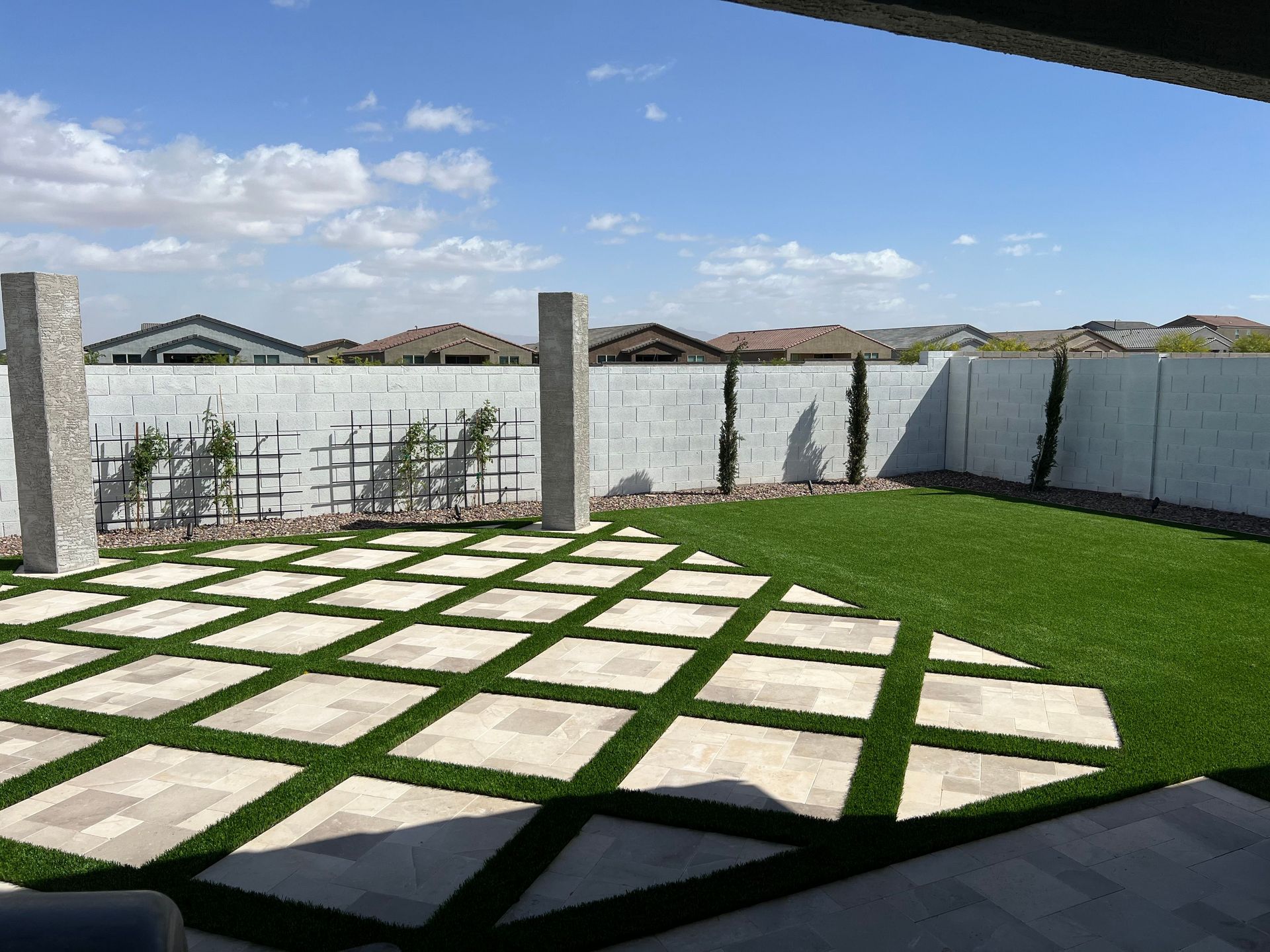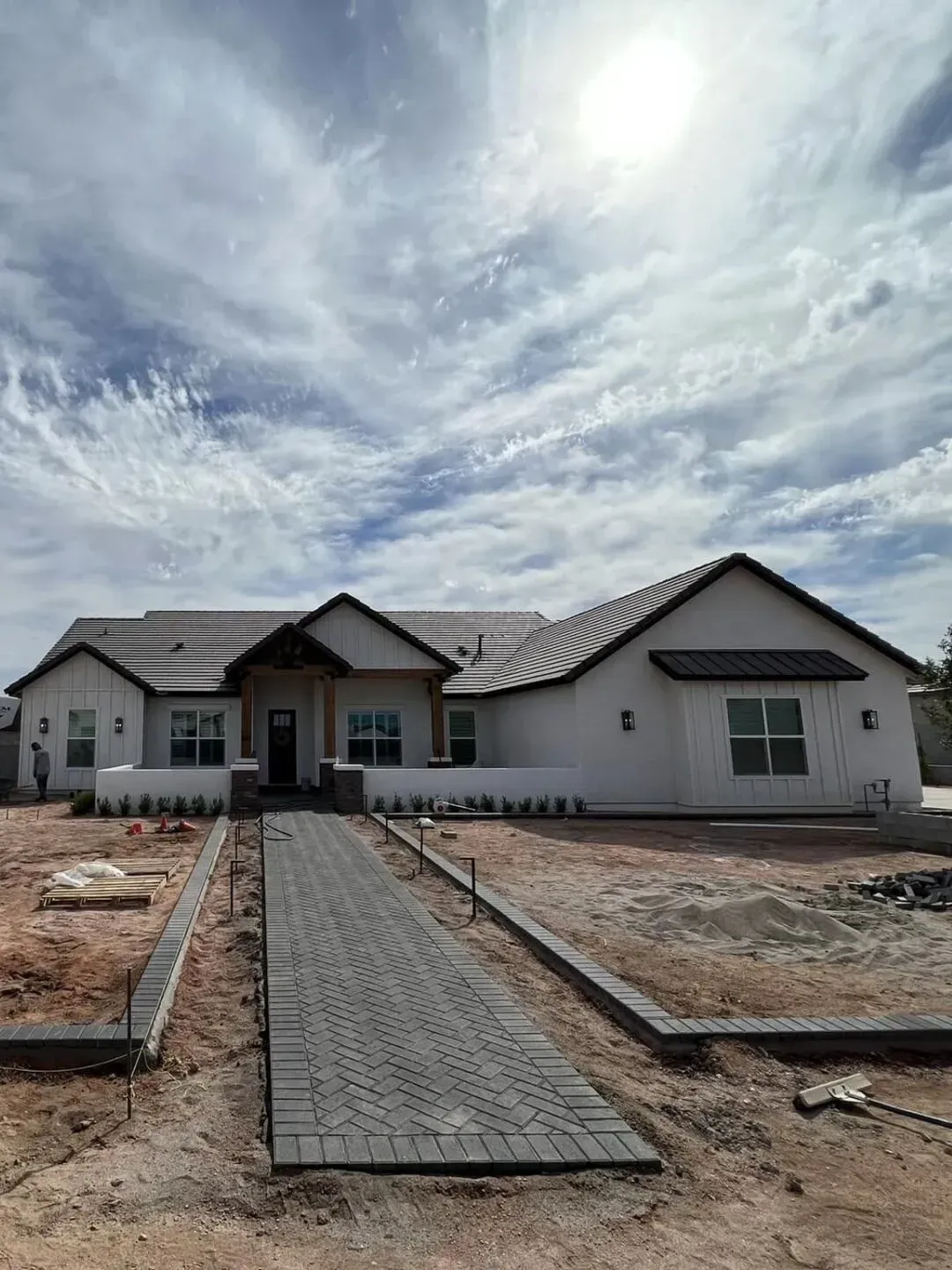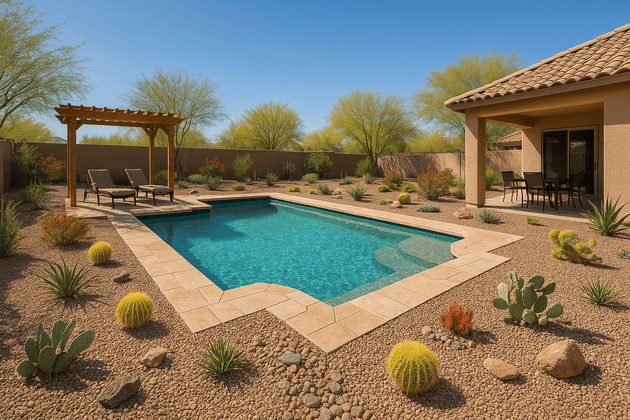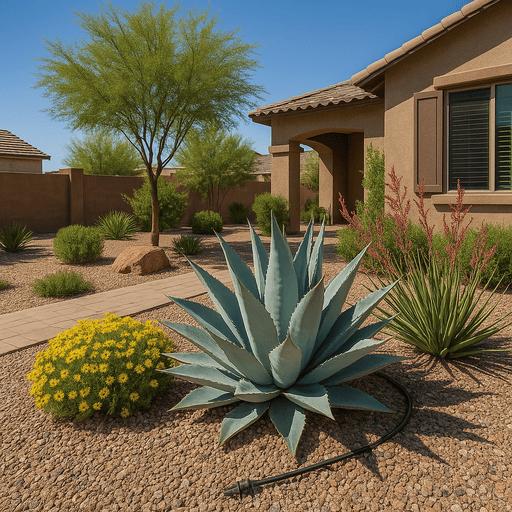How to Choose Drought Tolerant Plants for Queen Creek Landscaping
Get Information on the best drought tolerant plants for Queen Creek landscaping projects. Choose which drought tolerant plant fits your needs from the agave, cactus, yucca, and succulents that use less water and thrive in Arizona desert landscapes.

1. Thompson’s Yucca
Thompson’s Yucca is a reliable choice for Queen Creek landscapes because it handles extreme heat, reflective sunlight, and poor soil with no difficulty. Thompson’s Yucca roots form a dense underground network that stabilizes sloped areas and reduces erosion during monsoon storms.
The plant also produces tall flowering spikes that attract beneficial insects which helps support overall landscape health. Its narrow leaves create a clean architectural look that pairs well with contemporary design themes found in newer Queen Creek communities.
2. Teddy Bear Cholla
Teddy Bear Cholla brings striking golden color and sculptural form to desert landscapes. Most Queen Creek, Arizona homeowners do not know that its spines contain tiny barbed tips that help protect surrounding soil from wind erosion which is valuable in open Queen Creek lots.
This plant naturally grows at higher elevations but adapts extremely well to low desert heat. Birds often use the cholla as a nesting shield because predators avoid the spines which helps increase local wildlife activity in otherwise minimal desert yards.
3. Variegated Century Plant
The variegated century plant is loved for its bright yellow striping that adds contrast to gravel landscapes. The coloration is caused by reduced chlorophyll in the leaf margins which helps the plant tolerate intense Arizona sunlight by reflecting heat rather than absorbing it.
This slow growing agave is ideal for homeowners who want long term structure without frequent maintenance. In Queen Creek soil it grows more slowly than in sandy coastal regions which helps keep its size manageable in small to midsize front yards.
4. Red Echeveria
Red Echeveria offers a cool soothing texture that balances sharper plants like agave and cactus. What many people do not know is that its red tones intensify when exposed to mild environmental stress such as cooler winter nights or bright indirect sunlight which creates natural seasonal color shifts.
In Queen Creek landscapes this succulent does best with morning sun because the afternoon heat is often too intense. It grows well in decorative clusters near boulders or pathways and needs very little irrigation which makes it perfect for water conscious designs.
5. Mescal Agave
Mescal Agave is one of the most durable agave varieties for Queen Creek. A lesser known Mescal Agavedetail is that indigenous cultures historically used the plant for fermented drinks and fiber production which shows how strong and versatile the species is.
In a landscape setting its thick leaves reflect light and help moderate soil temperature around its base. The plant develops a deep root system which allows it to survive long periods without watering making it an ideal low care anchor plant for wide open gravel areas.
6. Hedge Euphorbia
Hedge Euphorbia brings lush green color that most desert plants cannot match. Few homeowners realize that this plant stores water in both its stems and leaf tissue which is why it remains vibrant during long dry spells.
In Queen Creek landscaping Hedge Euphorbia work well against perimeter walls where it can soften hard edges and add contrast to rock or granite. It also releases a natural latex sap when trimmed which discourages pests and helps it stay healthy with minimal intervention.
7. Palmilla Yucca Rigida
Yucca Rigida, also called Palmilla, stands out with its powder blue leaves and upright growth habit. A Yucca Rigida's blue color is caused by a waxy coating that helps shield the plant from ultraviolet light which is especially intense in Queen Creek, Arizona during summer.
This coating also reduces water loss through evaporation which makes the plant extremely drought tolerant. The tall structure of Yucca Rigida helps create vertical balance in designs that use many low lying succulents.
8. Cow Tongue Prickly Pear Cactus
The cow tongue prickly pear is known for its wide paddle shaped pads and seasonal blooms. What many homeowners do not know is that its pads can naturally re root if they fall to the ground which allows the plant to spread slowly without intervention.
This makes it highly resilient in the sandy and alkaline soils of Queen Creek. It also produces edible fruit that can attract wildlife and add seasonal interest while requiring almost no water once established.
9. Century Plant Agave Victoriae
Agave Victoriae is one of the most ornamental agave species due to its tight symmetrical rosette and natural white leaf markings. Agave Victoriae's slow growth is part of its survival strategy because it conserves energy for long term drought tolerance.
This makes it an excellent choice for small landscape beds or accent spots where a clean geometric shape is desired. It handles Queen Creek heat extremely well and performs best with minimal irrigation which makes it a favorite for modern desert designs.
10. Arizona Hedgehog Cactus
The Arizona Hedgehog Cactus is celebrated for its striking blooms in spring and its compact stature. Less commonly known is that this cactus features multiple stems that collaborate to shade its base, aiding in the conservation of moisture during intense heat.
Thriving in rock gardens and raised beds within Queen Creek, AZ, it flourishes where drainage is rapid. Its vibrant flowers not only attract hummingbirds but also contribute seasonal color without elevating water consumption, making it an invaluable part of water-efficient landscaping.
11. Claret Cup Cactus
The Claret Cup Cactus showcases some of the most vibrant red flowers in the desert, making it an exceptional choice for homeowners seeking seasonal appeal. Not many realize that its ribbed stems can expand and contract based on their water reserves, enabling it to endure prolonged dry spells.
In Queen Creek, this cactus thrives best in slightly elevated settings where water doesn’t accumulate. The striking red blooms frequently emerge in clusters, forming a stunning focal point that requires minimal upkeep.
Get a free quote for your landscaping projects from Modern Desert East Valley Landscaping.
East Valley Landscapers
Get a free landscaping quote.
Contact Us
Call Us: (480) 577-9577
East Valley Landscaping Services









